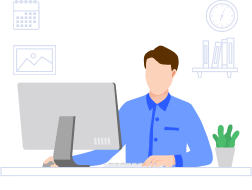What Is IoT? A Complete Guide for Beginners
In a world driven by technological innovation, one term that has been making significant waves is "IoT" or the Internet of Things. From homes to industries, IoT is revolutionizing the way we live and work. But what exactly is IoT, and how does it impact our daily lives? In this blog post, we will delve deep into the world of IoT, covering everything from its fundamentals to its diverse applications. IoT, or the Internet of Things, is a network of interconnected devices that communicate over the internet, gathering data through sensors and enabling automation for enhanced efficiency and decision-making. While the term "Internet of Things" was coined in the late 1990s, the concept traces its roots back to earlier innovations such as the invention of the internet and the development of sensor technology. However, it wasn't until the 21st century that IoT began to gain traction, fueled by advancements in connectivity, miniaturization, and data analytics. Over the past decade, IoT has witnessed exponential growth, with billions of devices now connected to the internet. This proliferation has been driven by falling costs of hardware, the rise of cloud computing, and the increasing demand for automation and efficiency across industries. Partnering with an experienced IoT App Development company can further accelerate digital transformation by crafting custom solutions tailored to industry-specific needs. IoT is reshaping industries across the board, from manufacturing and healthcare to agriculture and transportation. In manufacturing, IoT enables predictive maintenance, real-time monitoring, and supply chain optimization. In healthcare, IoT devices monitor patient health remotely, streamline operations, and improve the delivery of care. Similarly, in agriculture, IoT sensors track soil moisture, weather conditions, and crop health, helping farmers make data-driven decisions and optimize yields. One of the most visible applications of IoT is in the realm of smart homes. From thermostats and lighting systems to security cameras and voice assistants, IoT devices are transforming residences into interconnected hubs of convenience and efficiency. Homeowners can control and automate various aspects of their homes remotely, enhancing comfort, security, and energy efficiency. In the industrial sector, IoT is driving the Fourth Industrial Revolution, often referred to as Industry 4.0. IIoT solutions enable manufacturers to digitize and optimize their operations, leading to increased productivity, reduced downtime, and improved safety. Through real-time monitoring and analytics, businesses can gain insights into their processes and make data-driven decisions to stay competitive in a rapidly evolving market. As urban populations continue to grow, the concept of smart cities is gaining prominence. IoT technologies play a crucial role in creating sustainable and efficient urban environments by optimizing traffic flow, managing energy consumption, and enhancing public safety. From smart traffic management and waste management systems to air quality monitors and public transportation networks, IoT is transforming cities into interconnected ecosystems that improve quality of life for residents. While IoT offers immense potential, its widespread adoption is not without challenges. Some of the key considerations include: As IoT continues to evolve, several trends and innovations are shaping its future trajectory: The Internet of Things (IoT) represents a paradigm shift in how we interact with the world around us. By connecting devices, collecting data, and leveraging advanced technologies, IoT has the potential to drive innovation, improve efficiency, and enhance quality of life across various domains. However, realizing the full benefits of IoT requires addressing challenges related to security, interoperability, and privacy while embracing emerging trends and innovations. As we continue to harness the power of IoT, the possibilities for transformation are endless. Through this blog, we have only scratched the surface of the vast and dynamic world of IoT. As technology advances and new applications emerge, the journey of exploration and discovery continues, promising an exciting future shaped by the limitless potential of the IoT ( Internet of Things). Ready to harness the power of IoT for your business or home? Contact IIH Global today and unlock the endless possibilities of the Internet of Things. Let's embark on this journey together towards a more connected and intelligent future.Understanding IoT: Basics and Key Concepts
What is IoT and How Does It Function?
Essential Components That Power IoT
How IoT Has Evolved Over Time
The Origin and Evolution of IoT Technology
Growth and Adoption
Impact on Industries
Real-World IoT Applications Across Industries
Smart Home Solutions Powered by IoT
Industrial IoT (IIoT) for Business Growth
Share your project details to build your path toward success.
How IoT Enhances Smart City Development
Key Challenges in Implementing IoT Solutions
Future Trends and Innovations in IoT
Final Thoughts on IoT














